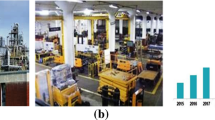Abstract
Exchange of medical images over public networks is subjected to different types of security threats. This has triggered persisting demands for secured telemedicine implementations that will provide confidentiality, authenticity, and integrity for the transmitted images. The medical image exchange standard (DICOM) offers mechanisms to provide confidentiality for the header data of the image but not for the pixel data. On the other hand, it offers mechanisms to achieve authenticity and integrity for the pixel data but not for the header data. In this paper, we propose a crypto-based algorithm that provides confidentially, authenticity, and integrity for the pixel data, as well as for the header data. This is achieved by applying strong cryptographic primitives utilizing internally generated security data, such as encryption keys, hashing codes, and digital signatures. The security data are generated internally from the header and the pixel data, thus a strong bond is established between the DICOM data and the corresponding security data. The proposed algorithm has been evaluated extensively using DICOM images of different modalities. Simulation experiments show that confidentiality, authenticity, and integrity have been achieved as reflected by the results we obtained for normalized correlation, entropy, PSNR, histogram analysis, and robustness.





Similar content being viewed by others
References
Raghupathi W, Tan J: Strategic IT applications in health care. Commun ACM 45(12):56–61, 2002
Huang H: PACS—Basic principles and applications. Wiley, New York, 1999, pp 116–119
Ashley R: Telemedicine: Legal, ethical and liability considerations. J Am Diet Assoc 102: no.2, 2002.
The Health Insurance Portability and Accountability Act (HIPAA), March 2009. [Online]. Available at http://www.hhs.gov/ocr/ privacy/index.html
Chao H, Hsu C, Miaou S: A data-hiding technique with authentication, integration, and confidentiality for electronic patient records. IEEE Trans Inf Technol Biomed 6:46–53, 2002
Coatrieux G, Maitre H, Sankur B, Rolland Y, Collorec R: Relevance of watermarking in medical imaging. In: Proceedings of the IEEE EMBS Conf. on Information Technology Applications in Biomedicine, Arlington, USA, Nov. 2000, pp. 250–255
Coatrieux G, Lecornu L, Sankur B, Roux Ch: A review of image watermarking applications in healthcare. In: Porc. of IEEE-EMBC Conf., New York, USA, 2006, pp. 4691–4694
Giakoumaki A, Pavlopoulos S, Koutsouris D: Multiple image watermarking applied to health information management. IEEE Trans Inf Technol Biomed 10(4):722–732, 2006
Zhou XQ, Huang HK, Lou SL: Authenticity and integrity of digital mammography images. IEEE Trans Med Imaging 20(8):784–791, 2001
Guo X, Zhuang T: Lossless watermarking for verifying the integrity of medical images with tamper localization. J Digit Imaging 22(6):620–628, 2009
Thodi D, Rodríguez J: Expansion embedding techniques for reversible watermarking. IEEE Trans Image Process 16(3):721–730, 2007
Celik M, MU G, Sharma A, Tekalp: Lossless watermarking for image authentication: A new framework and an implementation. IEEE Trans Image Process 15(4):1042–1049, 2006
Liew S, Zain J: Tamper localization and lossless recovery watermarking scheme with ROI segmentation and multilevel authentication. J Digit Imaging 24:114–125, 2011
Osamah M, Khoo B: Authentication and data hiding using a hybrid ROI-based watermarking scheme for DICOM images. J Digit Imaging 24(1):114–125, 2011
Pianykh O: Digital Imaging and Communications in Medicine (DICOM). Springer, Berlin Heidelberg, 2012
Digital Imaging and Communications in Medicine (DICOM) Standard, DICOM. (2006). [Online]. Available at http://medical.nema.org/dicom/2006/
Digital Imaging and Communications in Medicine (DICOM), part 15: Security profiles ed., National Electrical Manufacturers Association (NEMA), 2001, PS 3.15–2001
Kobayashi L, Furuie S, Barreto P: Providing integrity and authenticity in DICOM images: A novel approach. IEEE Trans Inf Technol Biomed 13(4):582–589, 2009
Security and Privacy: An Introduction to HIPAA, Privacy and Security Committee, Medical Imaging Informatics Section, NEMA [Online]. Available at http://medical.nema.org/privacy/privacy.html
Digital Imaging and Communications in Medicine (DICOM) Supplement 55: Attribute Level Confidentiality DICOM Standards Committee, Working Group 14 Security 1300 N. 17th Street, Suite 1847 Rosslyn, Virginia 22209 USA VERSION: Final Text (Draft), 5 Sept. 2002 Security Supplement. Available at http://medical.nema.org/
NEMA Standards Publication, Digital Imaging and Communications in Medicine (DICOM) Supplement 142: Clinical Trial De-Identification Profiles, Version 3, National Electrical Manufacturers Association, Washington, 2008
Bendel and Mike: Hackers describe PS3 security as epic fail, gain unrestricted access. Exophase.com, 2010
Elbirt J: Understanding and Applying Cryptography and Data Security. CRC Press, USA, 2009
Dworki M: Recommendation for block cipher modes of operation: Galois/Counter Mode (GCM) and GMAC. NIST Special Publication, 800-38D, 2007
Gueron and Shay: AES-GCM for efficient authenticated encryption—ending the reign of HMAC-SHA-1? In: Workshop on Real-World Cryptography, Stanford, USA, 2013
Barreto P, Rijmen V, The WHIRLPOOL hashing function [online]. Available at http://planeta.terra.com.br/informatica/paulobarreto/whirlpool.zip. 2003
Caelli W, Dawson E, Rea S: Elliptic curve cryptography, and digital signatures. Comput Secur 18(1):47–66, 1999
Cook D, Ioannidis J, Keromytis A, Luck J: CryptoGraphics: Secret key cryptography using graphics cards. In: Proceedings of the Cryptographers’ Track at the RSA Conference, San Francisco, CA, USA, 2005, pp. 1–18. The paper is published in the series Lecture Notes in Computer Science Volume 3376, 2005, pp 334–350
Author information
Authors and Affiliations
Corresponding author
Rights and permissions
About this article
Cite this article
Al-Haj, A. Providing Integrity, Authenticity, and Confidentiality for Header and Pixel Data of DICOM Images. J Digit Imaging 28, 179–187 (2015). https://doi.org/10.1007/s10278-014-9734-8
Published:
Issue Date:
DOI: https://doi.org/10.1007/s10278-014-9734-8




